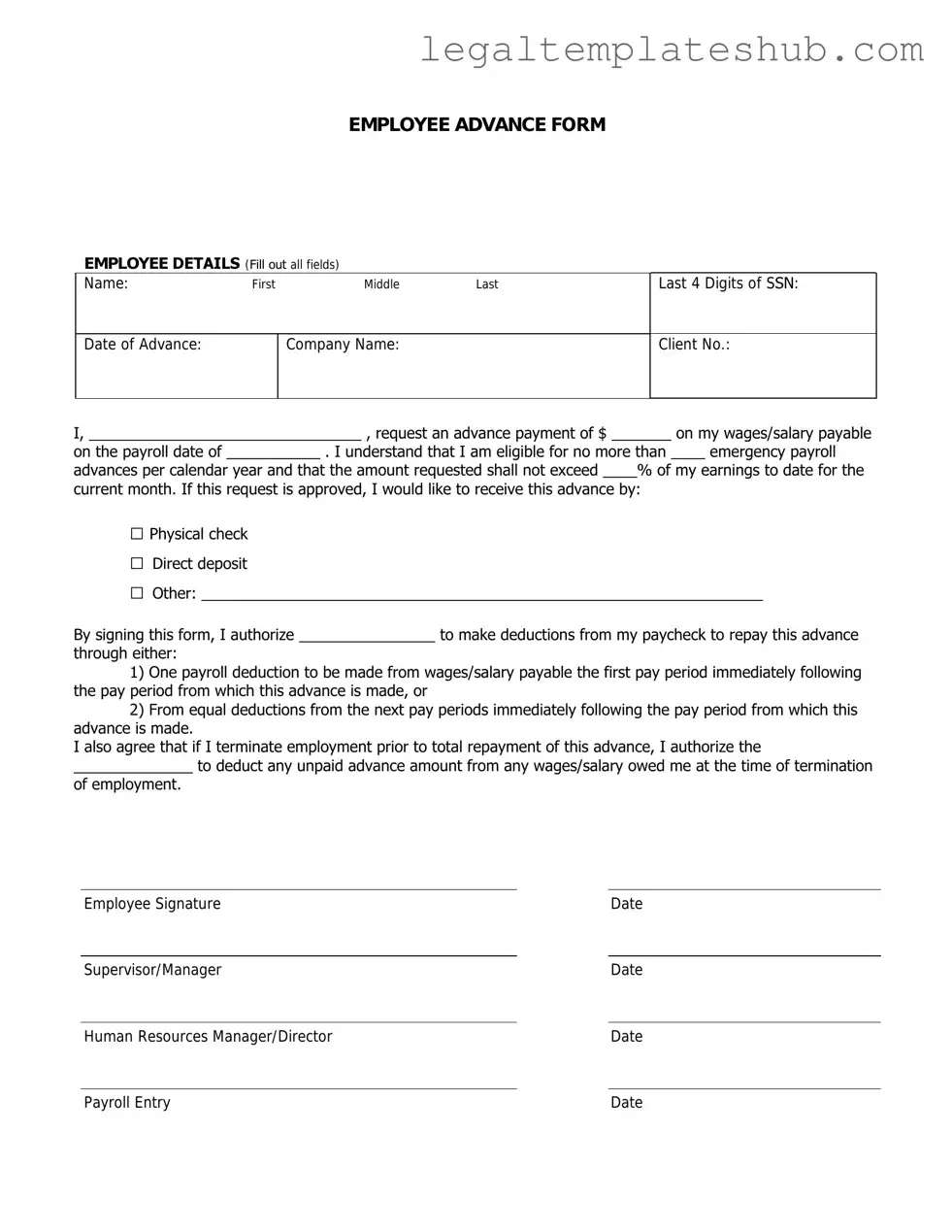Blank Employee Advance PDF Form
The Employee Advance form is a document that allows employees to request an advance on their salary for various personal or work-related expenses. This form streamlines the process, ensuring timely support for employees when needed. If you require an advance, please fill out the form by clicking the button below.
Access Editor
